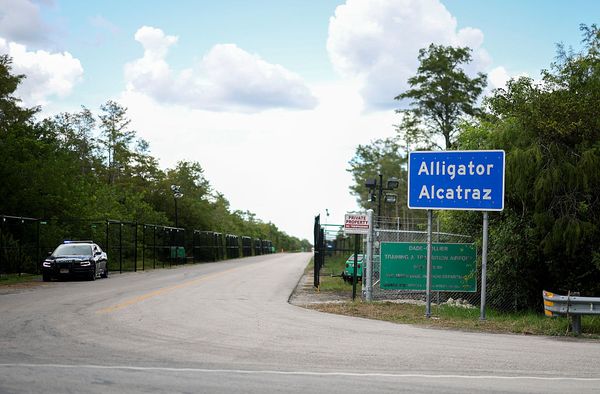
The Nissan Leaf makes a comeback during a pivotal time for the company that makes it.
It lost nearly $5 billion last year and, despite its failed attempt to merge with Honda, is still looking for long-term partnerships. It's undertaking a global reorganization as it attempts to cut costs while getting fresh, new products on the road after years of stagnation. It also needs a compelling electric option as, despite inventing the mass-market EV, the company has so far failed to capitalize on that.
The all-new 2026 Nissan Leaf is the brand's attempt to fix all of that.
The third-generation Leaf is the biggest update the nameplate has seen. Gone is the air-cooled battery, hatchback body and "good for the price tag, at least in 2017" spec sheet. Now, it boasts a crossover-ish body, a Tesla-style North American Charging Standard (NACS) plug, up to 303 miles of highway range and a far nicer interior.
Nissan thinks the new Leaf may reignite its affordable EV business. Will it work? I drove a prototype in Japan and then checked out a production version here in the U.S., but I'm still not sure.
Gallery: 2026 Nissan Leaf: See It From Every Angle







2026 Nissan Leaf: What Is It?
The new Leaf is a subcompact electric crossover based on the same CMF-EV platform that underpins the Nissan Ariya. It's smaller and should be considerably more affordable than the Ariya, which starts at $41,160. Nissan is targeting a low-$30,000 starting price, a source at Nissan tells InsideEVs.
The company says the Leaf is designed to compete with cars like the Hyundai Kona Electric, the Kia Niro EV and upcoming cheap options like the Kia EV3 and new Chevy Bolt, all of which should cluster around the $30,000-$35,000 range. But because the Leaf will be built in Japan, it's possible that President Donald Trump's auto tariffs will make it more expensive.

What we do now is that the cheapest version, the S, will come with a 52 kilowatt-hour battery and a 130-kW (175 hp) motor. Nissan hasn't announced its range, but figure somewhere in the low 200s. Most Leafs will get a bigger 75 kWh pack, which comes standard on the S+, SV+ and Platinum+ trims.
That battery will be much more promising. It offers up to 301 miles of range on the S+, but the heavier Platinum with its bigger wheels only gets 259 miles out of that larger pack. Power for the three highest trims is the same: 160 kW, or 215 horsepower.
Nissan says the Leaf should be able to charge from 10-80% in 35 minutes, too. It'll do that using a NACS port, which will give it native access to Tesla Superchargers. That port is on the front right of the vehicle.
Since that's the mirror image of the rear-left, where Teslas have their ports, you shouldn't have to double park to Supercharge. You also won't need a Tesla-style slow charger, as the Leaf comes with a J1772 port on its left fender.
That port is the slow-charging component of the Combined Charging System (CCS), which means if you have another non-Tesla EV, you shouldn't need to get a new home charger.
So, yes: two ports on the Leaf. One NACS, and one CCS. It's an unusual decision when most automakers in America are going cold-turkey to the Tesla standard, like Hyundai, Kia and Toyota, for example.

Unfortunately, that doesn't mean you'll be free from adapters. First off, you'll need a NACS-to-CCS adapter if you want to charge at existing CCS fast-charging stations, like an Electrify America stall. Weirdly, however, you also can't slow-charge the Leaf through the NACS port. All slow charging happens through the J1772 port, so you'll need a J1772-to-NACS adapter if you want to use Tesla home chargers or Destination Chargers.
So to recap: the Tesla plug is for fast-charging, and the other plug is for everything else—although adapters can help you work around some of that. (At least the Leaf is ditching the old CHAdeMO port.)
Nissan also says its ProPilot Assist advanced driver assistance system will come standard on the Leaf, too. So you shouldn't have to deal with steering it when you're stuck in traffic, even if attention is always required.
2026 Nissan Leaf: Is It Good?
I sat inside a Platinum+ model in Los Angeles, in addition to driving an early prototype at Nissan's R&D facility in Japan. In both instances, I was impressed by the Leaf's airy, roomy cabin and its comfortable seats. The new interior design is also lovely, with dual 14.3-inch displays and Google Built-In. That means you get native Google Maps with route planning. That system is standard on the SV+ and Platinum+ trim.

Platinum+ models also get a cool panoramic moonroof. Instead of using a physical shade, it uses electro-chromatic dimming, like you may have seen in auto-dimming mirrors. But this system is cooler: It shades the interior in distinct blocks, allowing you to leave it partially opened or closed. You can also close it in either direction, allowing the sun to only shine on the front or the rear seats. When partially opened, it even projects a little "Leaf" logo onto the seats in the sun.
In general, the Leaf Platinum certainly gives off the premium vibe Nissan is aiming for inside. On the road, however, Nissan claims it's supposed to be more fun to drive than other EVs. In my extremely brief test—a few laps around a test track, with some bumps and corners—the Leaf felt more agile and eager to turn in than many EVs. It had more body roll than a lot of EVs, but that made it slightly more fun, as it felt like the car was communicating its limits by rolling, like a Miata does.

Unfortunately, that roly-poly attitude made the car less impressive over bumps. I felt a surprising amount of head-tossing motions over the imperfect sections of the test track, and I really hope Nissan solves that before the production model arrives.
2026 Nissan Leaf Pricing And Availability
The new Leaf should arrive at dealerships this fall. Final pricing has not been announced, but as I said, the company is hoping to offer the entry-level Leaf in the low-$30,000 range. The company expects most buyers to opt for the SV+, the volume trim. I'd expect to pay in the mid-to-high $30,000 range for that one, as Nissan won't want to step on the Ariya's toes.
Both cars, however, are built in Japan. That makes them both subject to a 25% import tariff, though that could change before the Leaf goes on sale. So don't get too attached to any pricing promises.
The good news is that Nissan has every incentive to offer this thing for cheap and make it a hit. The company really needs a win in the electric vehicle market, and the 2026 Leaf is its best chance yet.
Contact the author: Mack.Hogan@insideEVs.com.







